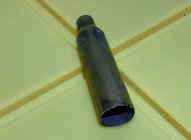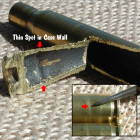Hey everyone,
Had this case separate today. Caliber was 7mm REM Mag, no pressure signs on the primer, heavy bolt lift though. It came out no issues with pistol cleaning rod and brush. Was surprised to see those dents though. Like the brass got sucked in. Shined a flashlight in the chamber and nothing unusual other than it needs a clean. So what gives?
Thanks in advance for your help!

Had this case separate today. Caliber was 7mm REM Mag, no pressure signs on the primer, heavy bolt lift though. It came out no issues with pistol cleaning rod and brush. Was surprised to see those dents though. Like the brass got sucked in. Shined a flashlight in the chamber and nothing unusual other than it needs a clean. So what gives?
Thanks in advance for your help!












